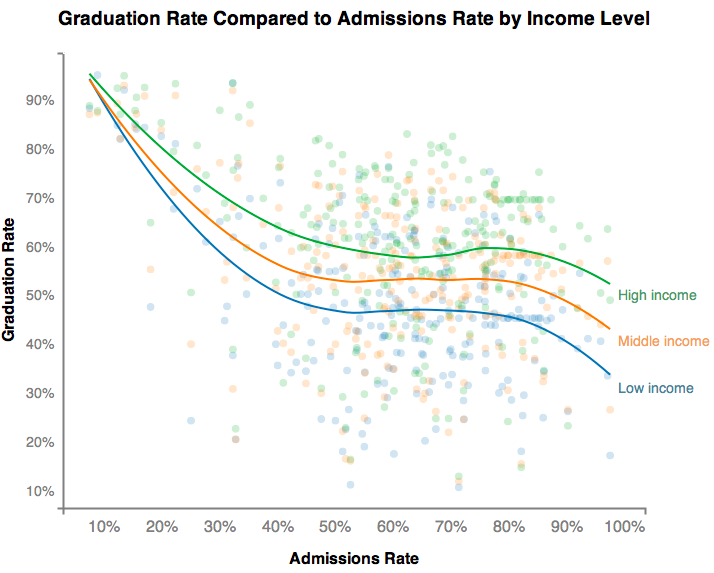When Chris was accepted into the Georgetown’s School of
Foreign Service, he didn’t think of himself as a first-generation
college student. Acknowledging his first-generation identity and how it
influenced his path came years later, but the label assigned by his
college is only a part of Chris’s individual story.
His
parents, both Vietnamese refugees who had not gone to college, raised
him in south Florida. Chris, who did not want to use his last name, knew
he’d earned a golden admission ticket, but he didn’t know that getting
in was only half the struggle. He hadn’t considered how his parents’
lack of higher education might influence his own college studies. “I did
homework with my classmates for the first time and I found myself
getting defensive about what little knowledge of college I had coming
in,” Chris said, describing the anxiety and distress he experienced
studying, taking tests, and meeting classmates. “I was playing pretend
the moment I had my first meaningful conversation with someone, and I
consequently felt lost the next year and a half.”
More schools are focusing on supporting students like Chris. But in
their goal to increase access to higher education, schools label young
people in ways that isolate rather than include
them particularly where colleges and the support systems they develop
for these students automatically equate being first generation with
being low income, as many studies suggest.
As a sociologist,
Celine-Marie Pascale, a professor and the associate dean for
undergraduate studies at American University, where I also teach, is
concerned with the language and attitudes that develop around culture,
knowledge, and power. When Pascale was a first-generation graduate
student, 17 years after earning her undergraduate degree, she was
awarded a scholarship and asked to visit donors. “I was incredibly
grateful, of course; I could not have gone to school without it. But I
became weary of going to events and representing the poor student they
were saving. It felt demeaning,” she said.
The
labels aren’t always intentional, and they aren’t always bad. Colleges
anticipate and define student categories—like low-income,
first-generation, and minority mostly based on voluntary Common Application
data provided before a student ever arrives on campus. While students
aren’t required to disclose their parents’ educational backgrounds—and
many don’t self-identified first-generation students are often linked to
or assumed to have economic disadvantage. Students may also choose not
to disclose their first-generation status; professors and classmates
won’t know unless they claim the label. But labels that assume
first-generation always correlates with low-income may get in the way of
the more important conversation of how individuals relate to their
college community and larger culture and foster feelings of resentment.
Does
it matter if first-generation students are also low-income? What about a
first-generation student of color who comes from a family of means? How
many labels are necessary to understand first-generation students’
needs? Labeling theory has been well established in multiple
disciplines, and when applied to the classroom, teacher expectations may
influence student performance. If a teacher lowers standards because he
assumes a student needs the accommodation, the student’s true potential
won’t be measured. A label may unintentionally shape a teacher’s
reaction, meaning she may assume a certain behavior results from the
label rather than the individual. At a critical juncture in a college
student’s cognitive development, the combination of labels may hinder
more than help.
Attending college is among the best ways to move up the economic ladder. Bachelor’s degree holders earn more than two million dollars more over a lifetime than those without. Given the rising costs of education, many fear that good higher education is getting out of reach of the poor.
And when poor students do attend schools, they too often choose the schools for which students have the worst outcomes: Low graduation rates, high debt and low future earnings.
To battle these forces, the federal government implemented the College Scorecard
initiative. This initiative is an attempt to highlight those schools
which are low cost and financially remunerative, and to condemn those
that are neither. While the primary feature of College Scorecard is a
website at which students and parents can look up statistics about
schools, another aspect of the initiative was the release of a huge,
publicly available dataset, which includes a breakdown of outcomes by
economic background.
We decided
to use this data to see which schools are helping lower income students
get into the middle class, and which are not. Where exactly does a low
income student get the “biggest bang for their buck?” The answer seems
to be that, if possible, poor students should attend the elite
institutions that lead to high salaries and have generous financial aid
programs. If these highly selective institutions are out of reach, as
they are to most Americans, a technology-focused state school may be the
best option.



